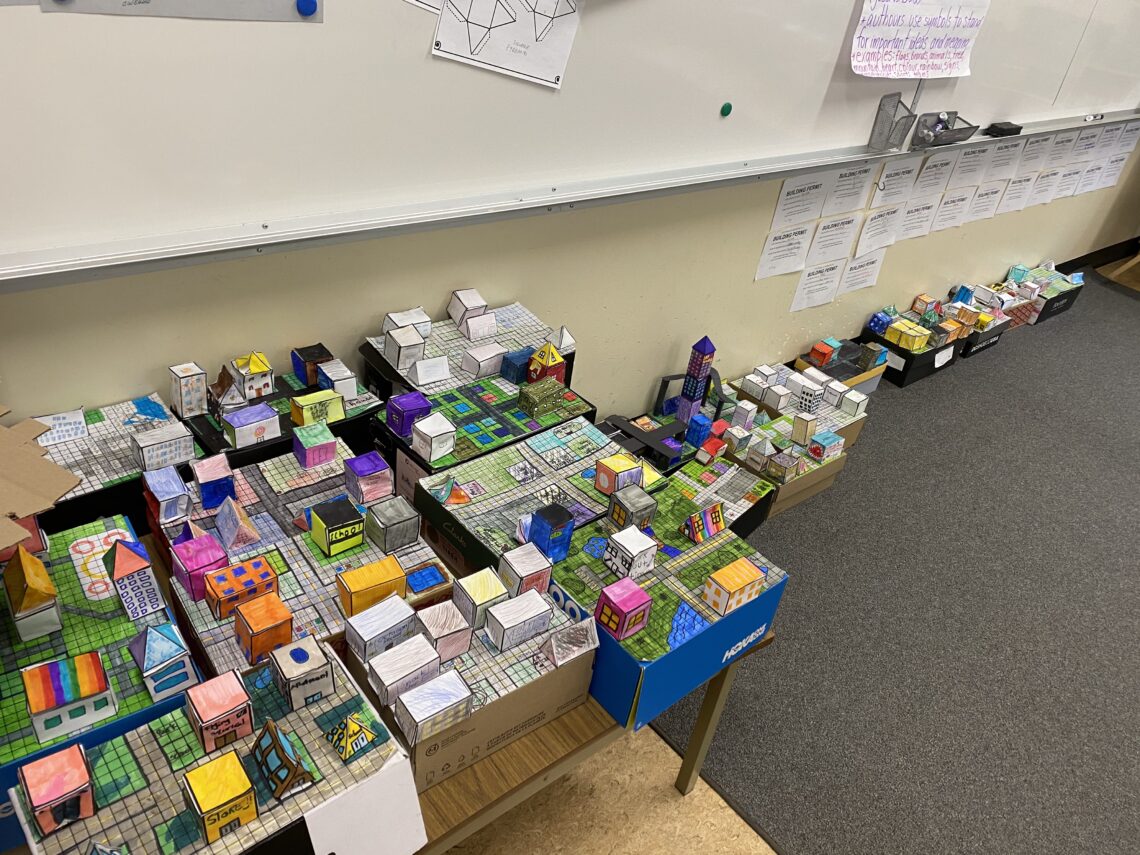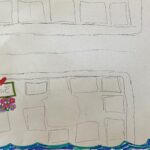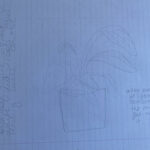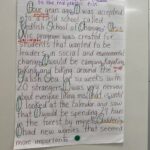Something I learned about myself as a teacher: My intuition of what could be a portfolio was not inaccurate. The portfolio I created with my practicum students, as a collection of evidence of their learning does indeed meet the criteria for a successful portfolio.
Each student got a shoe box with their name on it. Drafts, worksheets, and observation booklets (every piece of learning evidence from lessons I did with students) went in these boxes, and after drafting out a city plan and using their basic understanding of area and perimeter, students created cities on top of the “shoe box portfolios” that they got to take home. Students were assessed for two final products with rubrics that they saw throughout the whole creation process.
Notes from Michelle’s Presentation:
- Begin with the end in mind (what do I hope to get out of all this? Enriches the process to have an understanding of direction)
- Model courage (model everything you want to teach)
- Using pass/fail method of grading allows students to focus on learning rather than on whether they are good enough (this is so powerful!)
- Portfolios can show how student grew in understanding from beginning to end (I am glad I had the intuition to include drafts and rough copies of student work in their portfolios, so the box was not just filled with final copies of things, but also the raw blueprints of how learning unfolds)
My proof of learning this objective is a photograph of the Portfolios I had my practicum students create in May. I wanted to figure out a way to have all of the learning we did together (and the evidence of it) in one place. It shows my learning through my reflection of the value of what I created, and that it was perhaps more important and powerful than I realized initially. I had such a nice time creating these with students, and watching their pride in their creations, that I really look forward to doing something similar in my future classes.





